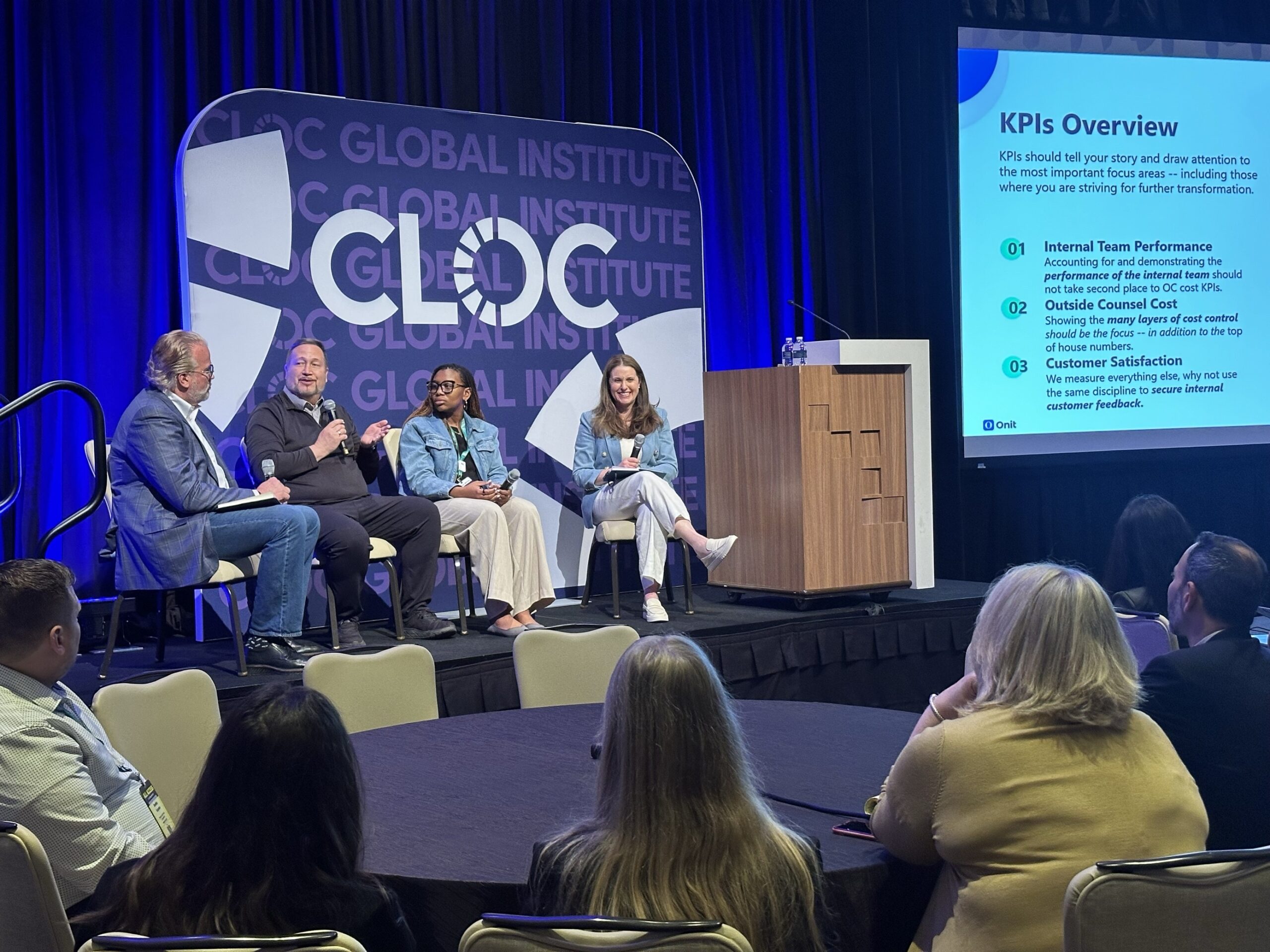There has been exciting evolution on the contract lifecycle management (CLM) front —proving the tech solution of tomorrow is here now, in new and game-changing ways to unlock innovation, keep cross-departmental functions connected, and redefine what is possible for legal operations and your entire business.
Collaboration has sometimes been called a serendipitous collision.
Take what transpired from the young women assembled at Bletchley Park to crack top-secret WWII codes. John Lennon and Paul McCartney parlaying their outdoor church concert into musical legend. “The Steves,” Jobs and Wozniak, introduced at their part-time summer gigs, as they both happened to like electronics.
Yet attributing collaboration even in part to chance doesn’t give the concept enough credit. Working in tandem to advance any goal requires developing trust, sharing responsibility, and honoring the strengths of others. Only then can there be a real fusion of talent and cooperation.
Today, technology is what keeps Legal connected with both internal clients and outside vendors — and yet, half of legal professionals (47%) believe their tech is outdated, according to the 2022 Enterprise Legal Reputation (ELR) Report. A similar number (46%) do not even have automated systems for managing contracts, necessitating manual labor to painstakingly review contracts.
File cabinets of hanging folders, individual drives, and legacy platforms may have helped create a foundation for CLM, but next-generation solutions with end-to-end automation have the capability to transform contracts into actionable intelligence and navigate how modern teams operate.
Here are three ways next-generation CLM can reduce complexity and catapult collaboration within your enterprise:
1. Create more visible workflows
One of the major roadblocks to efficient contract management is contracts spread across multiple systems. Often this means that every employee will go to Legal for every question about every arrangement. CLM can solve this visibility issue by keeping contracts in a single, easily accessible location with assigned user groups and security permissions spanning your business.
CLM can also help avoid delays by outlining each step in the contract lifecycle and creating well-defined workflows. Mapping out precisely how a contract travels through the proper channels ensures it “stops” at the right person at the right time so any issues can be identified and resolved. It also provides transparency for everyone involved in the contract management process, allowing real-time, synchronized negotiation and collaboration from request to renewal.
Delving deeper, a next-gen CLM solution with artificial intelligence (AI)-enabled dashboards can assist the entire enterprise in optimizing contract management. For example, a risk analysis dashboard can up-level visibility by furnishing insights to calculate and understand overall contract portfolio risks, while a comprehensive clause-usage dashboard harnesses essential language to assist in expediting the contract lifecycle, contributing to a productivity increase of more than 50%.
“CLM solutions provide the answer to the ever-prevalent question, ‘What is the status of my contract?’ Without a point of reference, an enterprise can waste time and energy tracking their in-flight contracts,” James Kearney, Director at Qualitas Consulting Group, an Onit partner, explained.
2. Accelerate deal closures
In a corporate landscape where time equals money, it’s easy to see why there can be a push-pull mentality between Legal and Sales: whereas Sales wants to close deals as quickly as possible to meet targets and drive revenue, Legal must scrutinize every detail of each contract to minimize risk and ensure regulatory compliance.
While it’s no secret that streamlining contract cycles can fuel sales velocity, being truly conscientious requires time — and this is where next-gen CLM comes in. By using pre-configured and data-sourced templates, automated digital signatures, and a library of terms and conditions, revenue operations can execute accurate contracts without necessarily waiting for legal operations’ contract-by-contract approval. Additionally, instead of passing versions back and forth, the latest CLM tools allow Legal and Sales to redline contracts simultaneously, often in two minutes or less – a process that is proving to elevate collaboration as well as advance sales cycles by as much as 24%.
“We are seeing more legal departments looking for ways to empower and shift responsibility for lower risk, higher volume contract work to the parties more directly involved in those transactions,” added Kearney. “Finding and properly leveraging a CLM platform capable of reducing the inherent friction between business and Legal, while simultaneously improving the overall fidelity of the final contracts themselves, will be a critical consideration for clients in 2023 and beyond.”
3. Prevent revenue leakage
Contract renewals are vital for recurring revenue recognition and business retention. Missed contract obligations can damage your company’s relationships and reputation (not to mention the potential financial cost). With a next-gen CLM solution, your company can devise playbooks that lay out the ground rules for contract negotiations and amendments and automate AI alerts for obligation management.
You can also stay on top of renewals — and augment efficiency overall — by integrating with an external, cloud-based system. System integrations can drive efficiency by reducing repeated manual labor, synchronizing data that initiates contract creation, and eliminating siloed systems for more vital enterprise-wide collaboration.
“It is imperative that companies take steps to insulate themselves against legacy contracting processes that may have been completely manual or ad-hoc in nature,” Kearney elaborated. “Such processes are typically born out of necessity by tenured staff, who have the institutional knowledge collectively locked up inside their heads. Transforming ‘this is the way we have always done it’ processes and incorporating historical knowledge into a robust CLM solution will help mitigate against the likelihood of both missed obligations and lost opportunities.”
Collaboration first – and future-forward
There is empowerment in collaboration. For businesses and practitioners that wish to grow, differentiate, and succeed, next-generation CLM can be a catalyst for evolution, helping to diminish complexity across the enterprise as it saves time, simplifies workflows, and bolsters contract portfolio value.
When openness and innovation meet, risk is better managed, costs are better understood, and true connection can occur. By breaking down silos, the most innovative and intelligent CLM will galvanize every function within an enterprise to work together, driving your business toward operational excellence with the technology of tomorrow leading the way.
Learn how Onit’s next-generation CLM solutions and AI-powered innovations meet you where you work with end-to-end automation of the contract management process to cultivate partnerships, elevate efficiency, and ignite revenue growth for enterprise-wide success.






